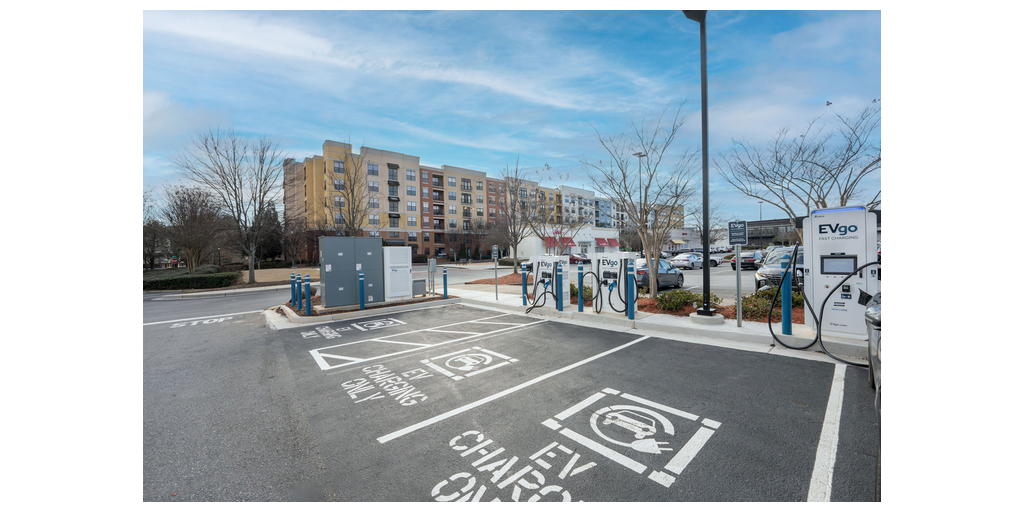Sign up for daily news updates from CleanTechnica on email. Or follow us on Google News!
You know what I’d love to do for this story? Share an image of the refreshed Chevy Bolt that’s supposed to come out in a year or two. But during an investor presentation on Tuesday, GM president Mark Reuss decided to cut off the video feed and only show some people the images of the refreshed Chevrolet Bolt. If you’re one of the special people who got the images, I’d love to see them, but for now, the image of my 2022 Bolt EUV towing a little trailer I use to haul camping gear will have to do!
Fortunately, Reuss didn’t cut the audio off. While we didn’t get to see what the new Bolt is going to look like, viewers did get to hear a little more about GM’s plans for the vehicle. Even better, outlets like The Verge summarized it for us so we don’t all have to listen to the whole presentation just to pick out a few juicy Bolt details.
So, I’ll go ahead and explore those and then offer my $.02 on them.
A Family Of Budget EVs With Faster Charging
Here’s the thing: GM’s plans for EVs are kind of in flux. The original plan was to make everything Ultium. Use the same cells and modules, and just put different numbers of them in different vehicles. Sadly, this approach kind of sucked for smaller EVs, as smaller battery packs ended up with lower voltages that ended up not being great for charging. For example, the budget-oriented (but not as cheap as Bolts are supposed to be) Equinox EV tends to charge a lot slower than the latest and greatest 800+ volt EV battery packs do.
That’s not all. On top of technical issues, it turns out that GM’s Ultium brand didn’t really get the customer name recognition the company had hoped. Problems building the modules have cropped up. The end result was a pain in the ass albatross that GM had saddled itself with, a proverbial ball and chain, and the attempt to make a “one size fits all” battery system meant it wasn’t a great fit for any vehicle.
So, the Bolt’s planned departure from Ultium for cost savings turned out to be the future norm for GM in the future. Instead of making the same battery for everything, the company is going to work with suppliers to come up with the best types of cells for each vehicle’s use case and size.
For the next Bolt (which will probably be more of a refresh than a new generation), one big benefit will be charging. Battery technology and electronics have come a long way, and the 55 kW limit simply can’t compete in the market these days. But, faster charging will mean a slightly higher price, so we can’t expect the same $29,000 starting price.
The other big news is that there won’t just be a new Bolt based on the Bolt EUV platform. According to Reuss, it will “just be one member of a family of Bolts, including an even lower cost option.” No further details were provided, such as whether this will mean a different EUV-based vehicle, or if the company plans to revive the more wedge-like and less SUV-like Bolt EV. It’s also possible that GM could build something new to be the budget car.
The company also made fun of Ford’s EV lab, which will be a “Skunkworks” type of outfit that brings EV technology forward to create affordable designs. Instead, GM is confident that its engineers already know how to build a budget EV — after all, they already did!
Some Thoughts On This As A Bolt Owner
While looks aren’t everything, they are still a very big deal in the automotive industry. A great vehicle that looks different or just plain bad can sink itself in short order. So, I’ll reserve judgment in entirety for now. Hopefully the images are released or get leaked soon. We also don’t have any idea how any of the new Bolts will drive yet, which is even more important.
Until then, I’ll have to act like many Tesla fans do and just look at the numbers and technology, and sprinkle in some assumptions based on my current Bolt EUV.
Is my ‘22 Bolt EUV the best vehicle around? No. There’s no shortage of other EVs that charge faster, have larger interiors, tow a LOT more, have greater range, have more torque/HP, and otherwise tick more boxes. There are EVs that drive better than it and do a lot more than it does. But none of the better EVs I’ve tested can beat the Bolt on price, and considering that important detail, it’s been a good value.
While most people only use their Bolt or EUV for local commuting and the occasional regional drive with a little bit of 55 kW charging, I’ve done a lot more than that. With some upgraded tires, I’ve taken mine on some fairly rough forest service roads for adventures. I’ve hauled smaller trailers, both for utility and for camping trips. On the longest one, I towed 1700 pounds of Harbor Freight trailer, camping gear, and furniture from North Carolina to New Mexico, including taking the bottom half of the Blue Ridge Parkway.
Really, my only gripe with the vehicle (again, considering the low price) is that charging is slow. When going through good sections of interstate with EV charging every 30 miles, I’d hit my stride and spend about 35 minutes after an hour of driving. On barren stretches where the Bolt had to charge full and run to near empty (or actually empty on one leg in west Texas), we’re talking about 2 hours of charging from 0% to 100% to make the next one.
If GM can make an attractive vehicle that has the Bolt EUV’s underpinnings, a durable LiFePO4 (LFP) battery pack, and 150+ kW charging, I’ll be one of the first buyers. If they can offer a modest 2000 lb tow rating and a factory hitch, I’ll put in a pre-order.
But, if GM can’t keep it in under $30k or otherwise can’t offer as much value as my ‘22 EUV, having faster charging won’t mean that much in the long run.
Featured image by Jennifer Sensiba.

Have a tip for CleanTechnica? Want to advertise? Want to suggest a guest for our CleanTech Talk podcast? Contact us here.
Latest CleanTechnica.TV Videos
CleanTechnica uses affiliate links. See our policy here.
CleanTechnica’s Comment Policy





